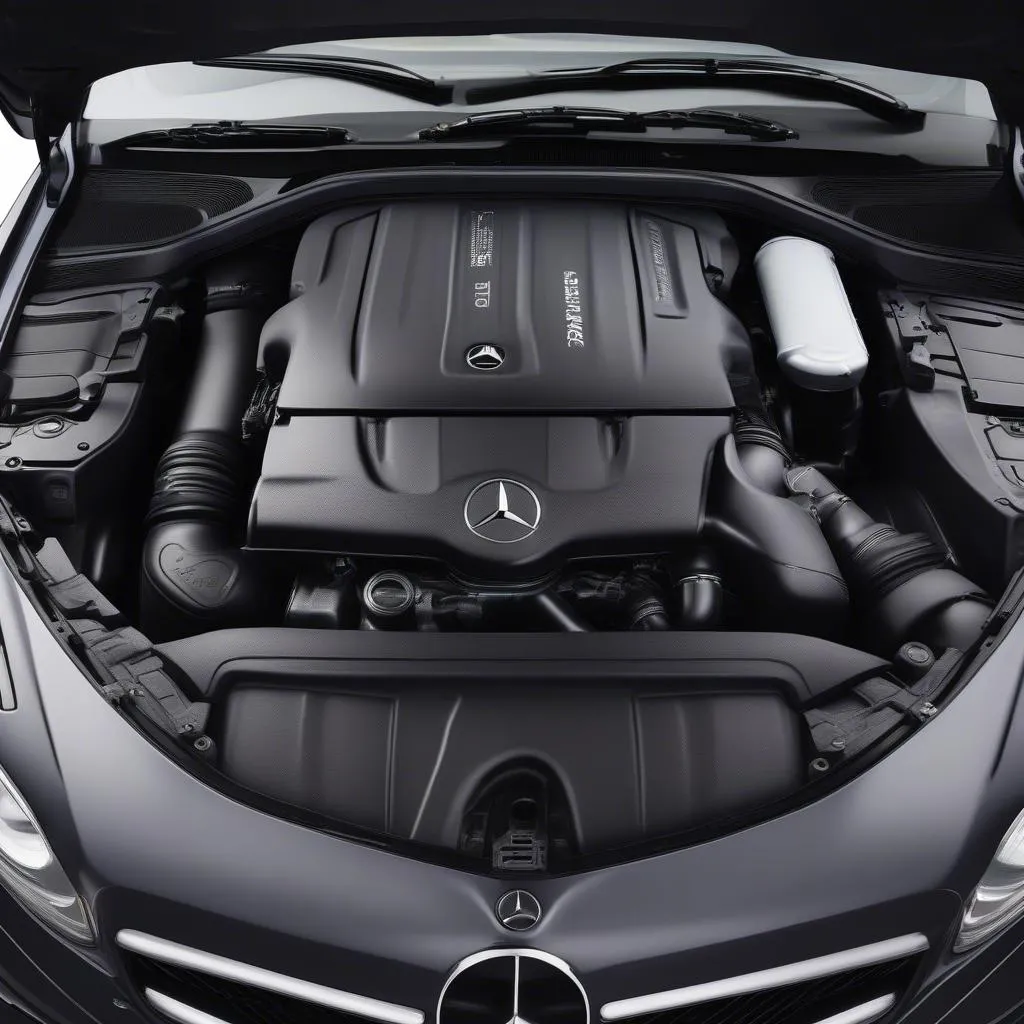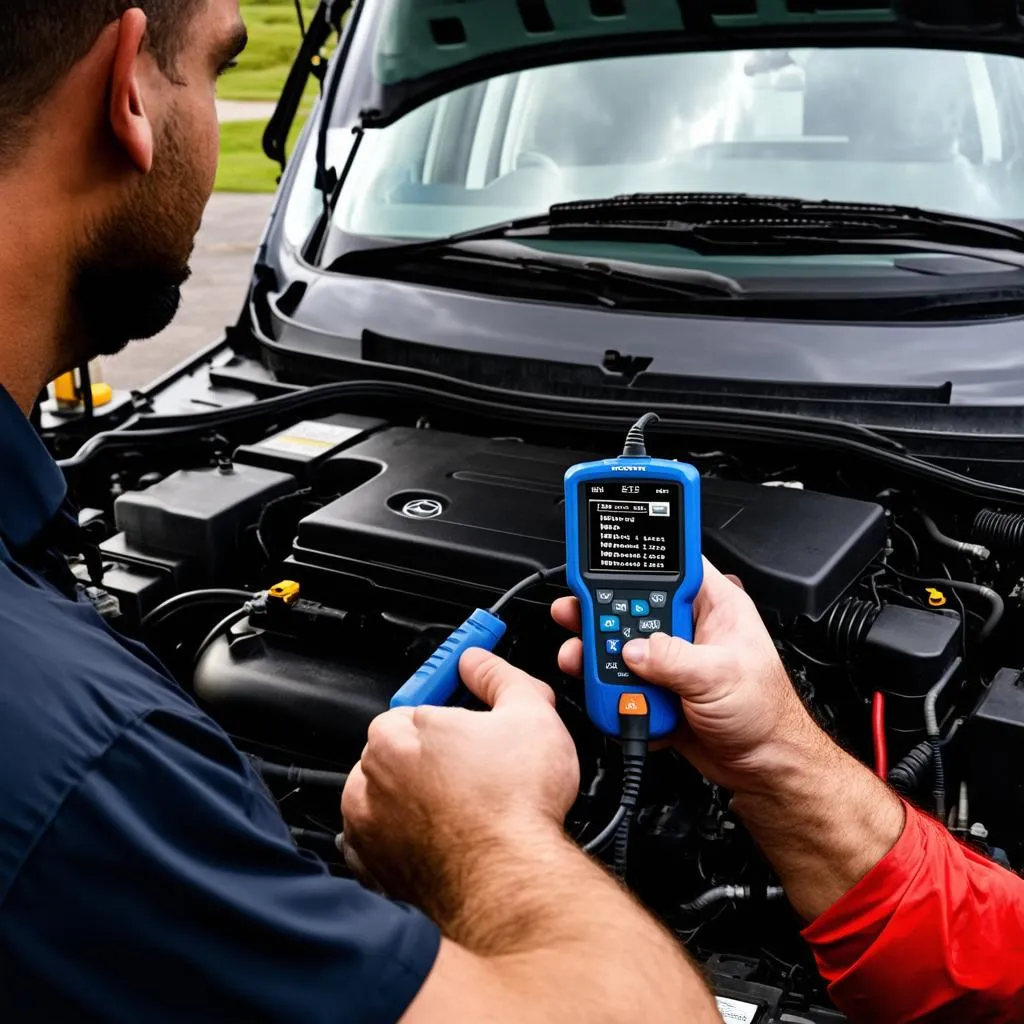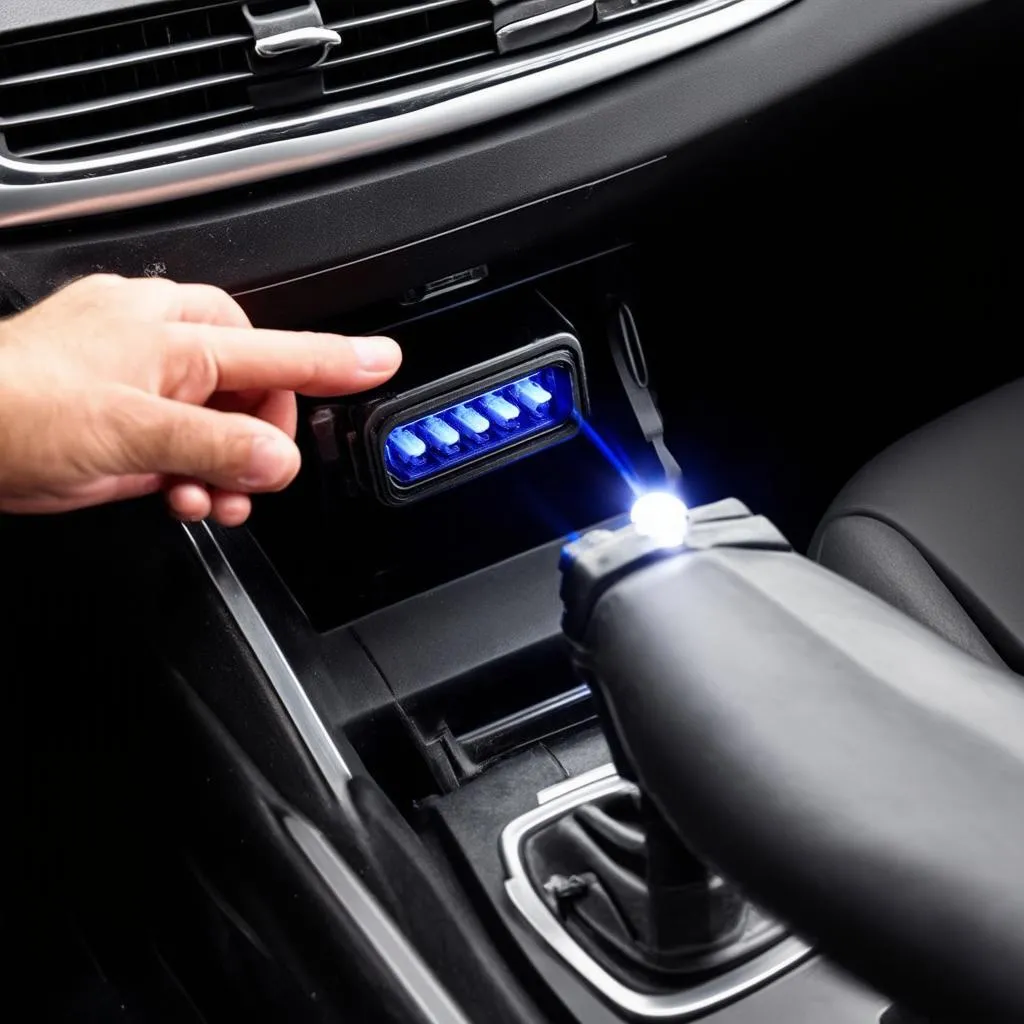The check engine light on your 2006 Mercedes E350 can be a source of anxiety, especially if you’re unsure about the cause. Fortunately, it’s not always a sign of a major problem. This comprehensive guide will walk you through the possible reasons for the engine light, how to diagnose the issue, and potential solutions.
Why is My Mercedes E350 Engine Light On?
Several factors can trigger the check engine light in your Mercedes E350. These range from simple issues like a loose gas cap to more complex problems with the engine or emissions system. Here are some common culprits:
- Loose Gas Cap: This is one of the most frequent causes. A loose or missing gas cap can disrupt the fuel system’s pressure, triggering the engine light.
- Oxygen Sensor Malfunction: The oxygen sensor monitors exhaust gases to ensure optimal engine performance and fuel efficiency. A faulty sensor can disrupt this process.
- Mass Airflow Sensor Issue: The mass airflow sensor measures the air entering the engine to regulate the air-fuel mixture. A malfunctioning sensor can lead to poor fuel economy and engine performance.
- Spark Plug Problems: Worn-out or faulty spark plugs can cause misfires, resulting in reduced engine power and illumination of the check engine light.
- Catalytic Converter Failure: The catalytic converter plays a crucial role in reducing harmful emissions. A failing converter can significantly impact engine performance and trigger the check engine light.
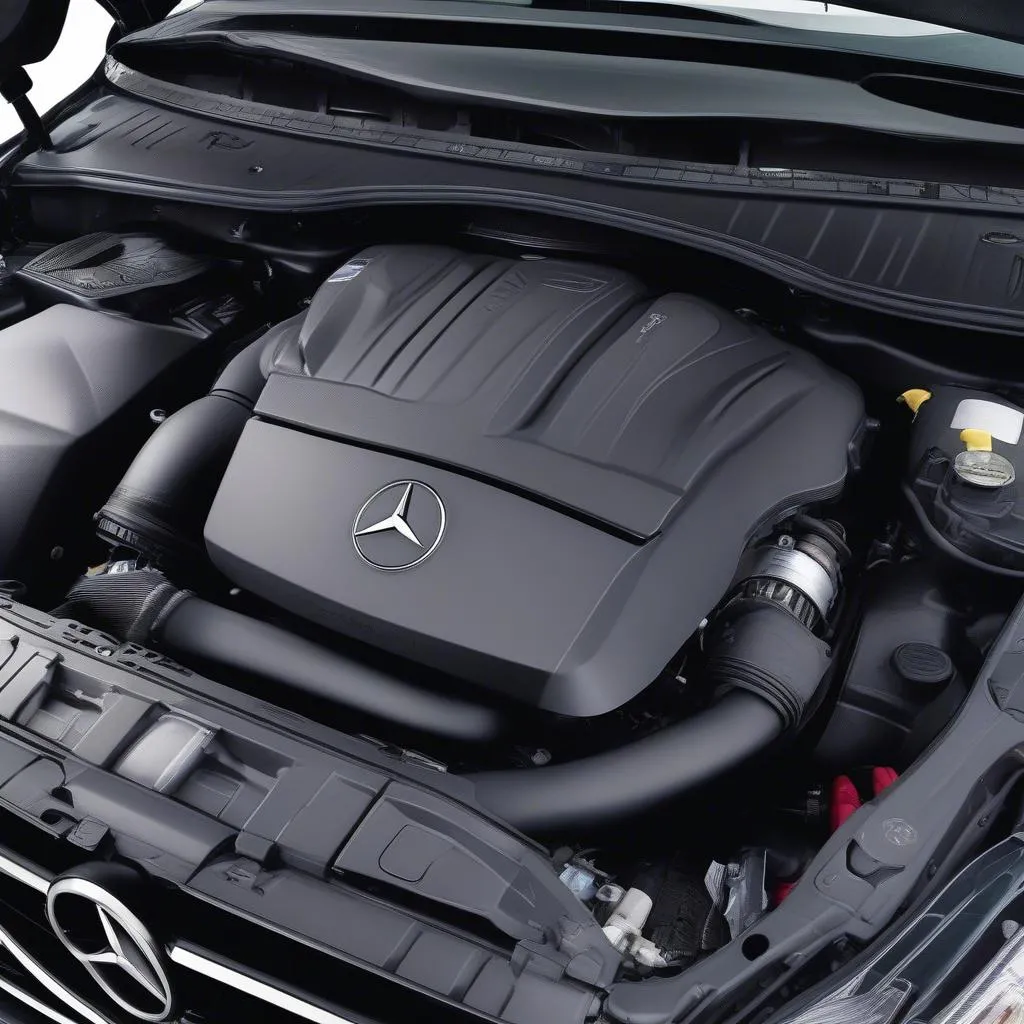 Mercedes E350 Engine
Mercedes E350 Engine
Diagnosing the Problem: How to Read the Codes
To pinpoint the exact issue, you’ll need to read the diagnostic trouble codes (DTCs) stored in your car’s computer. You can do this using an OBD-II scanner. Here’s a simple guide:
- Locate the OBD-II Port: The OBD-II port is typically found under the dashboard on the driver’s side.
- Connect the OBD-II Scanner: Plug the scanner into the port.
- Turn on the Ignition: Turn the key to the “on” position but don’t start the engine.
- Read the Codes: The scanner will display the DTCs stored in your car’s computer. Note down these codes.
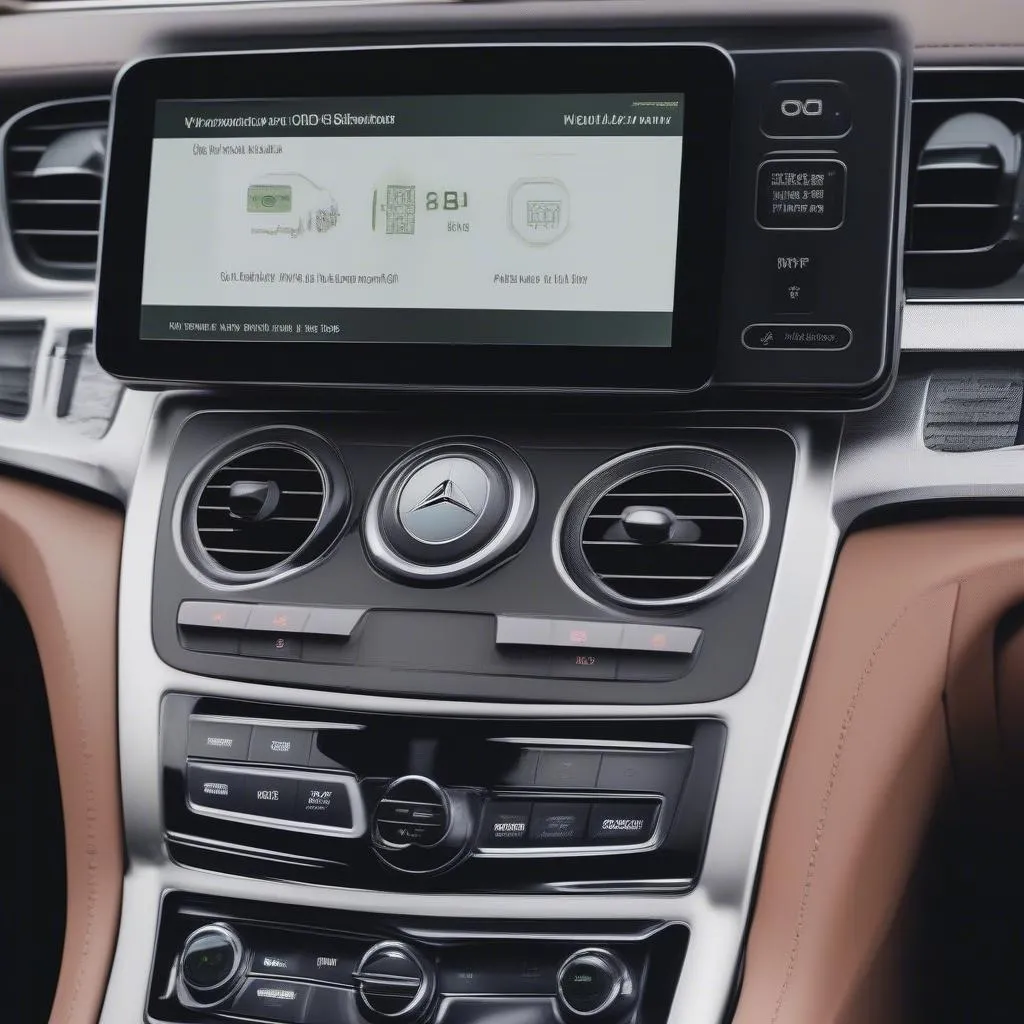 OBD2 Scanner Connected
OBD2 Scanner Connected
Tools and Equipment You Might Need
Depending on the specific problem causing your engine light to come on, you may need some of the following tools:
- OBD-II Scanner: Essential for reading and understanding the diagnostic trouble codes.
- Socket Wrench Set: Helpful for replacing spark plugs or other components.
- Screwdrivers: Necessary for accessing various parts during repairs.
- Replacement Parts: This will depend on the specific issue diagnosed, such as a new gas cap, oxygen sensor, or spark plugs.
Fixing the Issue: A Step-by-Step Guide
Once you have identified the problem using the OBD-II scanner and the DTCs, you can proceed with the necessary repairs.
Important: While some fixes are straightforward, others require specialized knowledge. If you’re uncomfortable working on your car, it’s always best to consult a qualified mechanic.
Here are some general steps you can take:
- Start with the Simple Fixes: If the DTC points to a loose gas cap, simply tighten it or replace it if necessary.
- Consult Repair Manuals: For more complex repairs, refer to your car’s repair manual for detailed instructions. You can also find helpful tutorials online.
- Consider Professional Help: If the issue is beyond your expertise, don’t hesitate to seek help from a qualified mechanic, especially for issues related to the engine or emissions system.
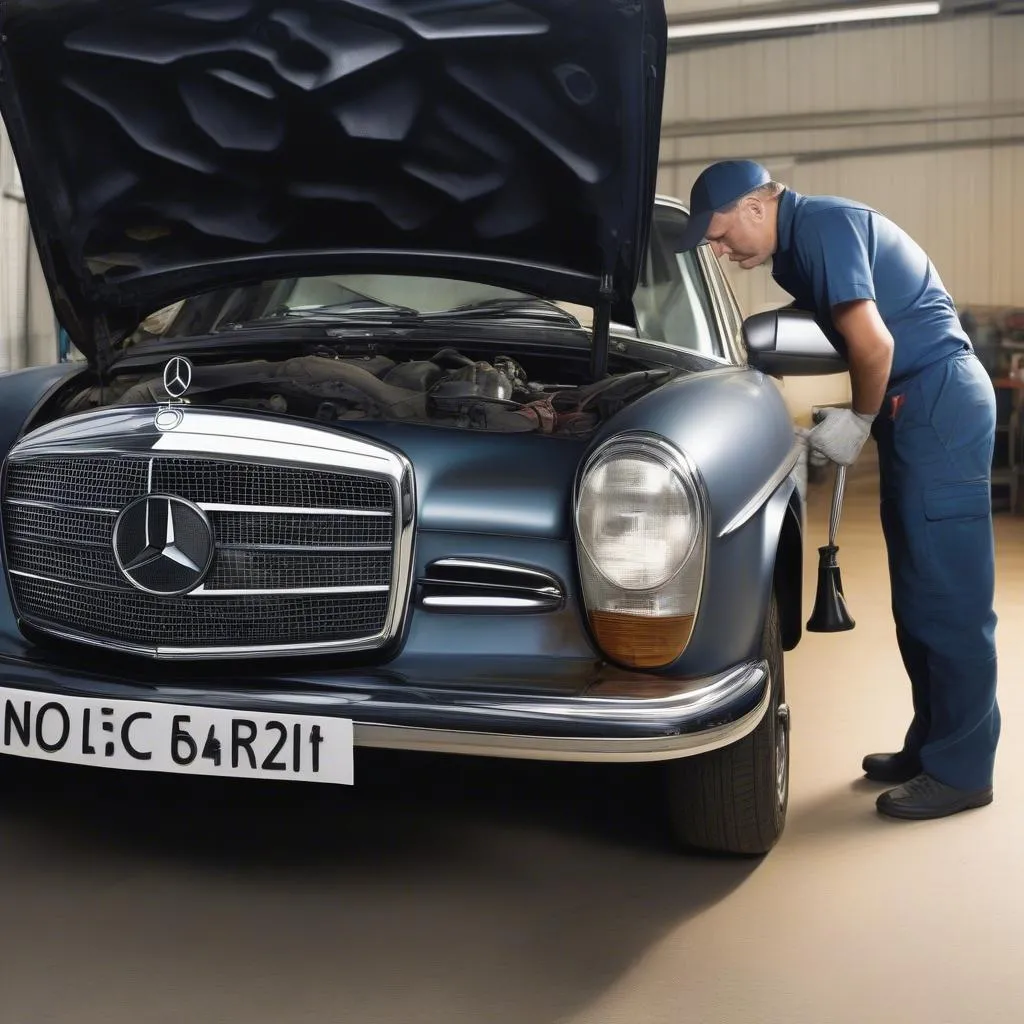 Mechanic Inspecting Engine
Mechanic Inspecting Engine
FAQs: Addressing Common Concerns
Q: Can I still drive my car with the check engine light on?
A: While you might be able to drive for a short distance, it’s crucial to get the issue diagnosed and addressed promptly. Driving with a serious problem can lead to further damage.
Q: Are there reliable OBD-II scanners that can provide detailed information?
A: Yes, brands like CARDIAGTECH offer advanced OBD-II scanners that provide comprehensive diagnostic information, making it easier to pinpoint the issue.
Q: My engine light is flashing. Is this serious?
A: A flashing check engine light usually indicates a more serious problem that requires immediate attention. It’s best to stop driving and have your car towed to a mechanic.
Q: How often should I get my car serviced to prevent engine light issues?
A: Following the manufacturer’s recommended service schedule is crucial for preventing engine problems. Regular maintenance, including oil changes, spark plug replacements, and inspections, can help avoid costly repairs and keep your engine light off.
Final Thoughts: Keep Your Mercedes Running Smoothly
Addressing the check engine light in your 2006 Mercedes E350 doesn’t have to be overwhelming. By understanding the potential causes, using an OBD-II scanner to diagnose the issue, and seeking professional help when needed, you can ensure your Mercedes continues to deliver a smooth and enjoyable driving experience.
Remember, preventative maintenance and addressing issues promptly are key to avoiding costly repairs and keeping your Mercedes on the road for years to come.

